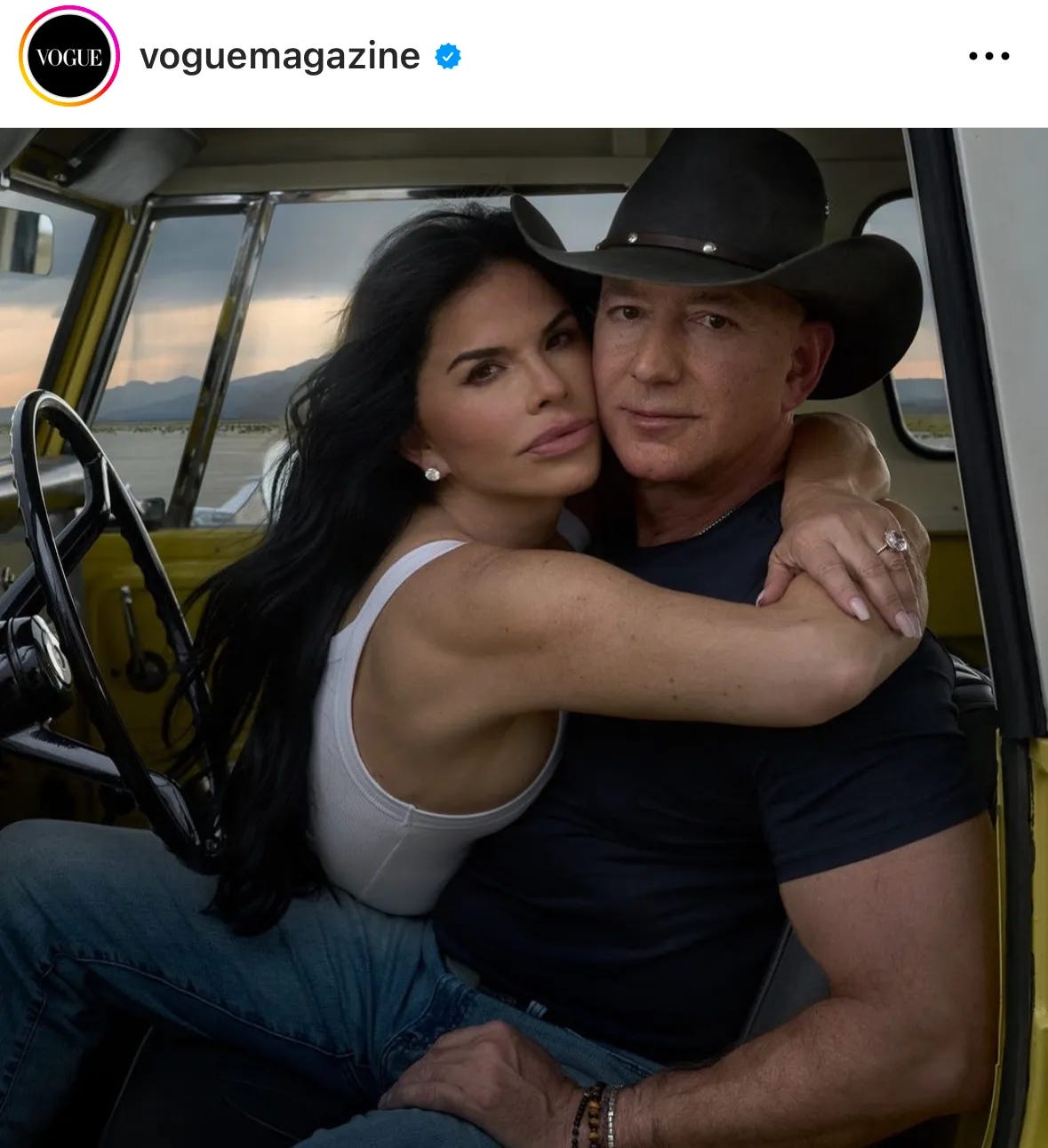What Lauren Sánchez and Vogue don't understand about the internet
And the eight rules they should have followed to avoid backlash
Being divorced from the real world means you risk missing out on a thing or two, and boy has Lauren Sánchez, her fiancé Jeff Bezos and US Vogue editor Anna Wintour been caught slippin’.
Following the publication of a lengthy profile of Sánchez in Vogue’s December issue it’s clear that the room was not read, the pulse was not taken and no one ran the idea by a person extremely - or even a bit - online. The trio were oblivious to the vibe shift that determined that a fawning interview with a billionaire’s bride-to-be alongside a cinematic Annie Leibovitz shoot inside a clock that cost Bezos, the founder of Amazon, $42 million was destined to backfire. Haven’t they heard about the cozzie livs?
The only winners were the commentators on Vogue’s Instagram who beautifully skewered the car crash feature within minutes of it dropping:
And my personal favourite:
A week on and the controversy is rich with learnings about the new rules of celebrity and PR, what constitutes an internet crime and what gives Gen Z audiences the ick. I’ll walk you through the eight ways they could have avoided the fallout in a second, but first I want to defend Sánchez. I realise I may be a lone voice here but I think I understand how the Emmy Award-winning journalist and former TV news anchor found herself inside that clock.
There was a time - really not that long ago - when securing a multiple page spread in Vogue was a coup. It meant something. It was also a safe bet. The magazine is almost never critical of its subjects and shoots them beautifully and generously. In the world of editorial it’s a no-brainer. All upside, no risk. A publicist’s dream.
My guess is this is why Sánchez, 53, was so eager to expose herself to Vogue’s ideas, and to rope Bezos, 59, in too. She believed a show on the pages of Vogue could only ever result in positive PR. History had told her so.
The almost universal derision in response to the feature proves that’s just not true anymore. For Sánchez, Bezos and Vogue it was a PR nightmare. More on this can be found at
by the brilliant .The reason the shoot became one of, if not the most mocked in Vogue’s history is because Sánchez and her team were relying on an outdated playbook which skimmed over the fact that she’s an odd fit for Vogue in any era.
It’s almost as if Sánchez and her team went into this believing that Vogue was still a print-only magazine, read by a small but influential group of elites, that would relish an in-depth look at Sánchez’s lavish life. But Vogue in 2023 is available to the masses, and the masses hated it.
Online readers can sniff out a puff piece in miliseconds. They question everything, especially wealth and power. Social media-native audiences like Gen Z and A are particularly suspicious, and they just didn’t buy that Sánchez deserved such an uncritical love bomb. As some of them would say, the vibes were off.
So what should Sánchez have done differently? The quick answer is to not have done it at all, but the longer one is to understand the eight new rules for celebrities engaged in profile building. Sadly for Sánchez this feature broke every single one…
Rule 1: Few are fooled by public relations dark arts
Online audiences increasingly understand how the media is manipulated by publicists who act on behalf of individuals and institutions. They can spot spin, know what a Friday-night news dump is, recognise a staged paparazzi photo and when it says “a source close to” they know that it’s the celeb or their publicist talking. They see soft ball interviews for what they are, and want those who have questions to answer to be asked them.
Keep reading with a 7-day free trial
Subscribe to highly flammable by Rachel Richardson to keep reading this post and get 7 days of free access to the full post archives.










